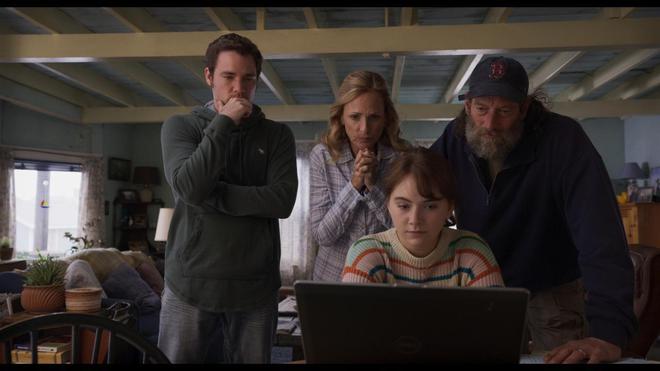


Despite all the controversy surrounding the recently concluded 94th Academy Awards, the focus will hopefully be on the win that mattered the most: CODA becoming the first film featuring predominantly deaf actors in leading roles and receiving the Oscar for Best Picture.
By winning the Supporting Actor (Troy Kotsur) award as well as Adapted Screenplay (Sian Heder), the Sundance indie project created history as the first film distributed by a streaming service — Apple TV+ — to win the Best Picture award. Incidentally, the only deaf performer to win an acting Oscar before Kotsur was his CODA co-star Marlee Matlin, 35 years ago, for her role in Children of a Lesser God, about a deaf woman's romantic relationship with a speech teacher.
Much has been written about CODA’s feel-good charm, the fantastic supporting cast and director Sian Heder’s immersive narrative, that of Ruby, the only hearing person in her deaf family, facing a crisis of conscience when she is torn between pursuing her love of music and the fear of abandoning her parents, when their fishing business is threatened.
But what does the win mean for the overall deaf community? Will it open doors for more disability representation in Hollywood films? Can we see more disabled talent — directors, writers, actors and technicians — to tell their stories?
A look at recent history is encouraging. Todd Haynes' Wonderstruck (2017), John Krasinski's A Quiet Place (2018) and its sequel, Darius Marder's Sound of Metal (2019) and Chloé Zhao’s Marvel flick Eternals (2021) all featured deaf characters who were integral to the storyline. More importantly, they were not relegated to the sidelines or framed to be two-dimensional victims introduced just to garner the sympathy of the audience.
It has also made A-list Hollywood stars out of deaf actors such as Lauren Ridloff and Millicent Simmonds. Ridloff was already known for her recurring role in the popular television show The Walking Dead, before landing the coveted role of a deaf superhero Makkari in Eternals, who possesses the ability of superspeed. Millicent, who is just 19 years old now, broke out in the mystery-drama Wonderstruck, after which global fame came calling with The Quiet Place franchise; without giving too much away, her character’s cochlear implant in the film becomes the solution to saving mankind against the aliens.
In both examples, the characters’/ actors’ deafness is used to empower them — as opposed to being used as a tool to incite pity — and have been lauded for showcasing disability representation in a positive manner.
Similarly, in Sound of Metal, we see a wonderfully constructed world environment for the deaf, following a metal drummer who loses his hearing, and is struggling to accept that his deafness is not a handicap. Though the project did face flak for casting two hearing actors — Riz Ahmed and Paul Rac, who is a CODA (child of deaf adults) — the deaf community mostly embraced the project for shedding a rare light on their societal norms.
Problems will always continue to exist; major studios and networks will still ponder the business aspects of movies or television shows headlined by hearing-impaired performers, many films still don’t subtitle dialogues when they release locally and overseas in theatres, while captioned screenings (a format that includes text description of significant sound effects as well as dialogues) are even more rare. Yet, CODA’s success on the awards circuit — along with Kotsur’s goosebumps-inducing speech at the Oscars — cannot be understated, as it has now encouraged streaming services globally to take a bet on the most unlikely of contenders.
One hopes that just like watershed moments in Hollywood emerged for Black and queer representation in the last decade, CODA and similar projects that come in its wake will do the same for disability representation, and influence the hearing person’s perception of deafness and the deaf community.
After all, all representation matters.
